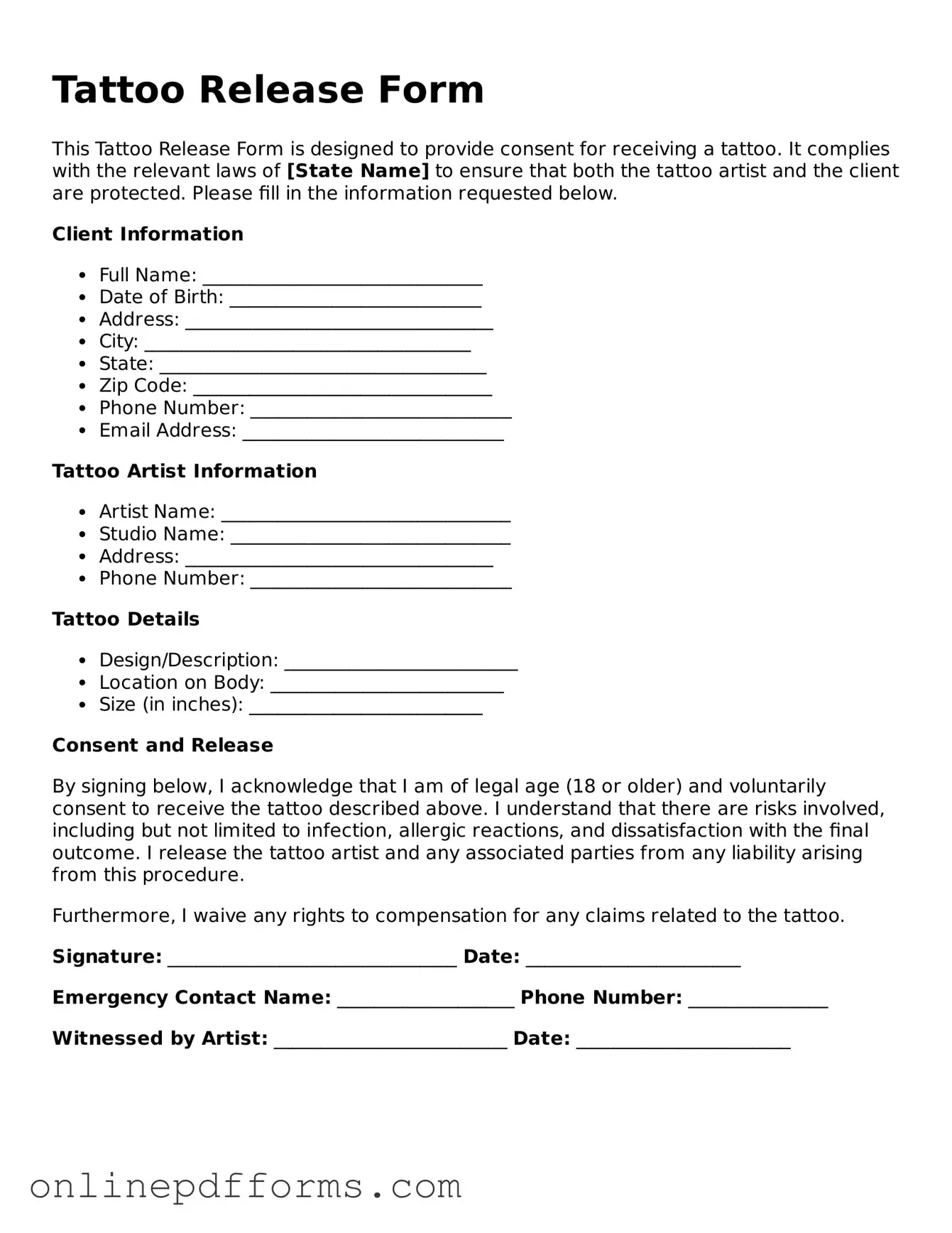The Tattoo Release form is similar to a Photography Release form. Both documents grant permission for the use of an individual's likeness. In a Photography Release, a person allows a photographer to use their image for promotional or commercial purposes. This ensures that the photographer has the right to publish or display the images without facing legal issues. Just like the Tattoo Release, it protects the creator's interests while respecting the subject's rights.
Another document that shares similarities is the Model Release form. This form is used in the modeling industry, where models give consent for their images to be used in advertising or other media. Like the Tattoo Release, it outlines how the images can be used and protects the model's rights. Both forms emphasize clarity in the use of personal likeness and help prevent misunderstandings between the parties involved.
The Music Release form is also comparable. This document allows artists or producers to use a musician's work in various projects. Similar to the Tattoo Release, it ensures that the rights of the creator are respected and that they receive appropriate credit or compensation. Both documents serve to formalize agreements and protect the interests of the parties involved.
A Video Release form is another related document. It permits the use of an individual's appearance in video productions. This is akin to the Tattoo Release, as both forms require explicit consent for the use of personal likeness. They provide a legal framework that safeguards the rights of individuals while allowing creators to utilize their work freely.
Additionally, the comprehensive Employee Photo Release documentation is essential for organizations to properly manage and utilize their employees' images for promotional activities. This ensures that employers adhere to legal standards while showcasing their workforce effectively.
The Consent to Treat form is also relevant. In medical settings, this document allows healthcare providers to treat patients. While it focuses on medical procedures rather than artistic expressions, both forms require informed consent. They ensure that individuals understand what they are agreeing to and protect the rights of both parties.
A Waiver of Liability form shares some characteristics as well. This document releases one party from legal responsibility for potential harm or damages. In the context of tattoos, it protects the tattoo artist from liability if complications arise. Both the Waiver and Tattoo Release forms emphasize informed consent and the acceptance of risks involved in the respective activities.
The Partnership Agreement is another document with similarities. This agreement outlines the terms and conditions of a business partnership. Like the Tattoo Release, it requires clear communication and mutual consent between parties. Both documents aim to prevent disputes by clearly defining the rights and responsibilities of each party.
The Non-Disclosure Agreement (NDA) also bears resemblance. An NDA protects confidential information shared between parties. While the focus is different, both documents require explicit consent and understanding of the terms involved. They ensure that sensitive information remains protected, whether it’s a tattoo design or proprietary business information.
Lastly, the Employment Agreement can be compared to the Tattoo Release. This document outlines the terms of employment between an employer and employee. Both forms require clear communication and mutual understanding. They protect the interests of both parties by detailing rights, responsibilities, and expectations.
